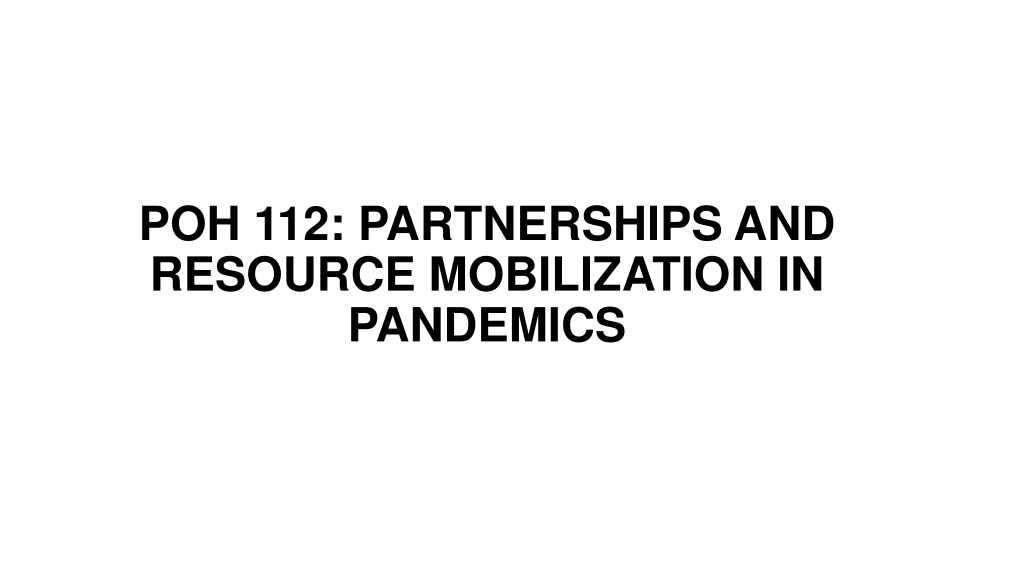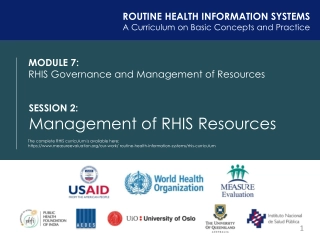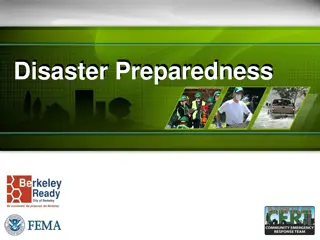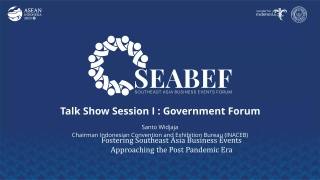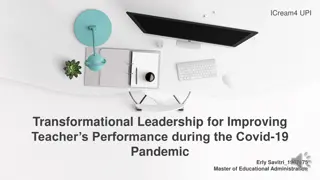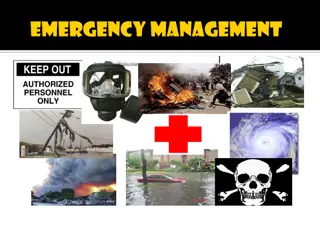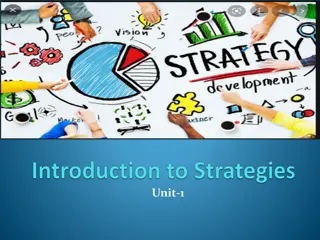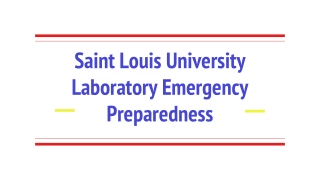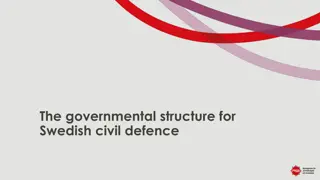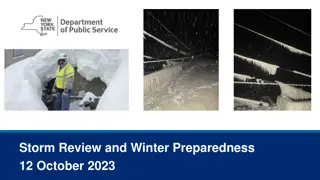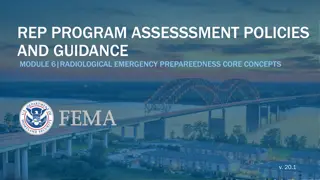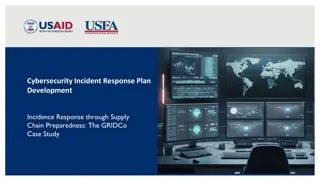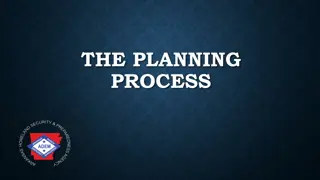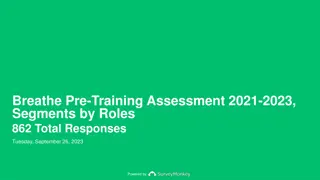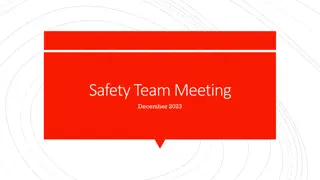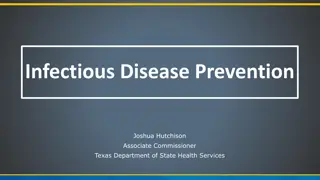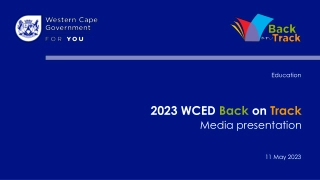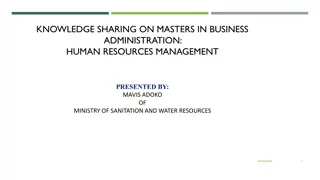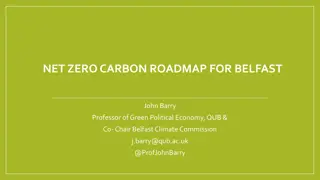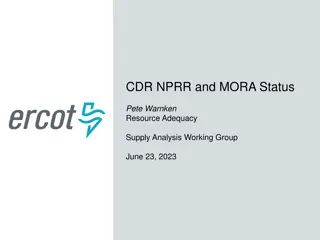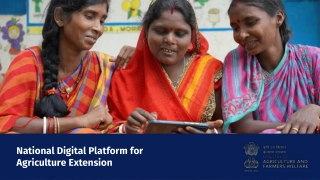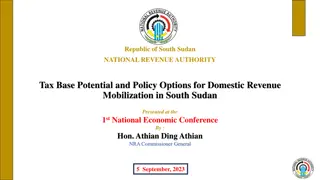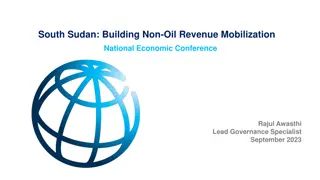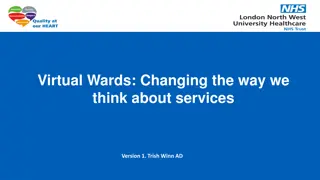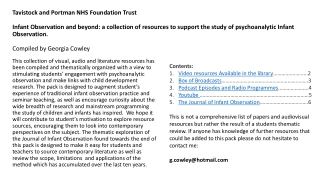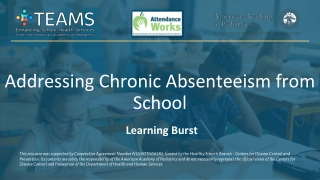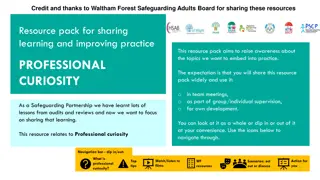Understanding Resource Mobilization for Pandemic Preparedness
This topic delves into partnerships and resource mobilization strategies essential for combating pandemics. Learners will gain knowledge on engaging partners, coordinating resources, and the importance of mobilizing different types of resources such as financial, technical, human, and institutional. The expected outcomes include outlining pandemic prevention measures, explaining coordination mechanisms, practicing partnership laws, and understanding resource mobilization approaches. By creatively leveraging local assets and diversifying funding sources, institutions can enhance their independence and flexibility in implementing critical programs during pandemics.
Download Presentation
Please find below an Image/Link to download the presentation.
The content on the website is provided AS IS for your information and personal use only. It may not be sold, licensed, or shared on other websites without obtaining consent from the author. Download presentation by click this link. If you encounter any issues during the download, it is possible that the publisher has removed the file from their server.
- Resource Mobilization
- Pandemic Preparedness
- Partnerships
- Coordination Mechanisms
- Institutional Sustainability
Presentation Transcript
POH 112: PARTNERSHIPS AND RESOURCE MOBILIZATION IN PANDEMICS
Purpose This topic will introduce learners to knowledge and skills on how to map, engage and coordinate partners and resources for pandemic in prevention, preparedness and response.
Objectives This topic enables learning about: Categories of partnerships in pandemics Coordination mechanisms for pandemics Laws and by-laws governing partnerships in pandemics Approaches and steps of resource mobilization for the management of pandemics
Expected Learning Outcomes At the end of this topic learners are expected to: Outline categories and pandemic prevention, preparedness and response Explain coordination mechanisms for pandemics Practice laws and by-laws governing partnerships Describe approaches and steps of resource mobilization for the management of pandemics mandates of partners in
What is Resource Mobilization ? Resource mobilization is understood in the broad sense: Mobilizing financial resources Mobilizing technical resources Mobilizing human resources Mobilizing institutional resources
Resources Mobilization A process of identifying and obtaining resources help achieve organizational sustainability Types: Financial and non-financial supplies Human resource - human, workforce, technical staff Financial resources - Funds, capital, physical cash Materials - equipment, machines, instruments, stationeries, to goals and ensure
Purpose of Resource Mobilization To creative efforts in using own local assets to gain support for institutional goal To create multiple sources of funding to increase institutional independence and flexibility to implement programs including policy and guidelines Reduce reliance on external or foreign funding.
Resources Mobilization : Strategies Mass stakeholders to raise awareness of a particular objective Social Action people giving up resources for a common good, especially to complement public services: e.g. volunteering Citizen Participation: local ownership of interventions that build capacity of the community in tack Public Advocacy deliberate actions designed to influence public policy/attitudes e.g. lobbying for a relevant law to be changed Popular Education: integration of systematized knowledge into the community action e.g.: inclusion of pandemic prevention in the general school curriculum Local Services Development Capacity building of infrastructure making it possible for the community to respond to its own needs mobilization engaging/motivating a wide range of
Resource Mobilization: Strategies The most important tips for seeking funding Apply for a reasonable and appropriate amount of funding. Provide specifics in proposals, but be concise. Build a network of partners. Be precise when responding to donors. Start the pilot projects with private funds if possible.
Resource Mobilization : Sources Types: Internal and external resources Multilateral and Bilateral organizations Government budget Non Governmental Organizations Corporate organizations Internally generated funds Individuals donors Private sector
Mobilizing Internal Sources The internal sources of funding constitute the financial sources that are raised from within the country itself The analysis: covers the country's capacity to raise financial resources from within proposes means for improving the mobilization of internal resources The analysis covers the budgets of relevant institutions and local authorities, national funds, and private domestic sources
Mobilizing External Sources The external sources of funding represent out-of- country sources such as bilateral and multilateral donors External sources of funding represent the second door of financing after internal sources. The analysis covers the international donor community and proposes means for increasing the mobilization of funding from external sources
The Impact of Resource Mobilization When Resource Mobilization is done well, the following can occur: New or additional resources can be mobilize You can diversify funding sources can mobilize Building or expand partnerships and relationships with many other stakeholders and partners It will increase networking and communications with the stakeholders and new partners You can build institutional capacity It will lead to properly monitor and evaluate your resource mobilization activities
Key Principles of Resource Mobilization There are many aspects in Resource Mobilization but the key principles are: A personal approach to the donor is preferred Understand the donor s viewpoint Demonstrate your impact on people Show need and use of funds Always say thank you Build long-term relationships with donors Accountable and reporting back in a timely manner
Success Cases The Kenyan government successfully lobbied for additional funding to facilitate affordable and equitable access to COVID-19 vaccines for Kenyans. The funding was used to procure more vaccines, deployment of those vaccines by boosting Kenya s cold chain storage, strengthen the capacity of sub-county stores, and equip health facilities with vaccine storage equipment. https://www.worldbank.org/en/news/press-release/2021/06/28/kenya- secures-130-million-for-covid-19-vaccines ASSIGNMENT: What are some of the success resource mobilization cases in other parts of the EAC region?
Core References Food and Agriculture Organization of the United Nations (2015): FAO s quick guide to Resource Mobilization, Promoting partnership with FAO Resource Mobilization Orientation: http://www.searo.who.int/entity/partnerships/participant.pdf Resource Mobilization: https://www.idrc.ca/sites/default/files/sp/Documents%20EN/Donor- Partnership-guide.pdf Resource Mobilization Guidebook: Policies and Guidelines: http://www.ifrc.org/PageFiles/133530/RC0122_APFN_Guidebook%20Final2.pdf Barry Checkoway. Community Development Journal, Volume 30, Issue 1, January 1995, Pages 2 20, https://doi.org/10.1093/cdj/30.1.2 Approach To Resource Mobilisation And Communications 2017: http://www.unocha.org/cerf/sites/default/files/CERF/AG2017/Approach%20to%20Resource %20Mobilisation%20and%20Communications%202017.pdf
Review of The Pandemic Preparedness with One Health approach (PPOH) short course is by the East African Community (EAC) Secretariat in cooperation with universities of the six EAC Partner States. It is facilitated by the German Government and implemented by the Deutsche Gesellschaft f r Internationale Zusammenarbeit GIZ GmbH through the Global Programme Pandemic Prevention and Response, One Health (GP PPOH)
